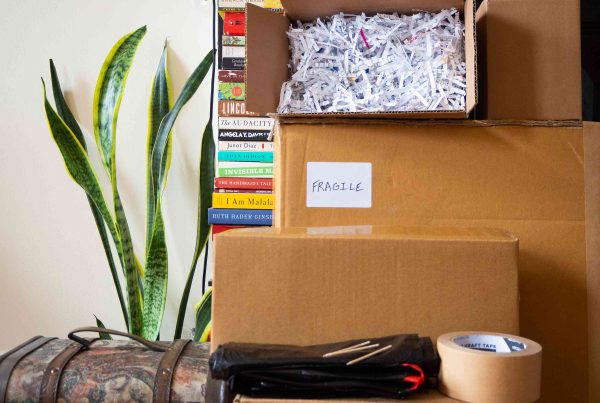
Shipping Household Goods and Personal Items
For shipping household goods and personal items, look for a shipping company that can handle FCL (full container load) or LCL (less than container load) ocean freight shipments. While shipping your cargo by sea may take longer, it can often be the most economical way to send your goods. Shipping by air freight is faster but also more expensive.
Packing & Loading
If you are interested in an all inclusive door to door service or even a door to port service, your shipping company should provide you with full packing and loading of your household goods. Your shipping company should have a worldwide network of agents who can handle packing, loading and offer a professional packing material for any circumstance. They should also provide pallets, lift vans or crates for fragile items. All shipment should be safely placed into your own or consolidated container for shipping. Your shipping company should offer full coverage insurance on any transfer that has been professionally packed. If you’re shipping household goods and personal items this will help.
Check with your local City Hall to see if you need a permit to have a 20,’ or 40’ container positioned at your home or facility. Some trucking companies may require a copy of the license before delivering the container. If you fail to acquire a permit where permits are required, any charges that incur will be billed to you. When the container arrives at your door, inspect it. Make sure there are no holes in the container BEFORE the driver leaves. Sweep out the container to remove any debris, dirt or dust. Also check the FMC website.
Tips for Shipping by Sea
When shipping your personal effects by sea you may choose to ship your cargo FCL (full container load) or LCL (less than container load) depending on the quantity and volume that you plan to ship. Shipping a full container-load is when the shipper contracts for the transportation of an entire container. Common container sizes include 20’, 40’ and 40HQ. This is useful for when you have a very large quantity of goods to ship.
Container Dimensions:
- 20’: Length: 19′ 2″ x Width: 7′ 6″x Height: 7′ 8″ (1,164 cu. ft.)
- 40’: Length: 39′ 1″ x Width: 7′ 6″ x Height: 7′ 8″ (2,376 cu. ft.)
Cargo must fit into a 40′ sea freight container and must be boxed, crated or palletized. Palletized refers to cargo that is stacked together on a pallet and shrink-wrapped. Palletized ocean freight has a higher probability of reaching the destination without damages.
Tips for Shipping by Air – Shipping household goods and personal items
Shipping by Air is usually not recommended for Household Goods or Personal Effects as it is much more expensive. However, compared with ocean freight, air freight is faster and very reliable. You can often send your goods in 1-3 days to almost any location in the world. Air freight differs from other types of freight because the cost is based on weight. The same packaging and crating requirements may apply.
Vehicle Export from the US
Vehicles must be in a safe, drivable condition, capable of normal operation on public streets or highways when tendered for shipment to be considered an “operable vehicle”.
- Federal regulations (CFR 176.905[d]), require that there is less than ¼ tank of fuel. Propane tanks must be empty.
- Remove all loose items and personal effects from the vehicle, including the trunk for RO/RO (roll-on/roll-off) service only.
- Any part/item that would normally be permanently installed in/on the vehicle, but is loose or not bolted in, should be removed.
- Anti-theft Alarm Systems – If you leave the car alarm system in your vehicle, make sure that the system is disengaged before delivery to the receiving terminal or agent.
US Customs and Vehicle Export – Shipping household goods and personal items
To export any motorized vehicle, US Customs requires the proof of ownership. The best document is the original Title issued by one of the state’s Department of Motor Vehicles (DMV). Foreign Title, MSO (Manufacturer’s Statement of Origin), Salvage Certificate, Scrap or Dismantler’s Certificate will work just as well. Some US Customs offices may ask for additional documents such as Bill of Sale, copies of ID or Passport, Power of Attorney, copies of military orders, etc.
For older vehicles that were never titled in the US, the original registration and notarized bill of sale will be required.
If the vehicle is being financed (meaning you’re still making payments on it) then the finance company (bank, credit union, etc.) will need to provide two things: Letter of Authorization to export the vehicle PLUS Notarized/Certified Copy of the title.
Export Taxes on Vehicles
There is NO TAX for exporting vehicles. This applies to any motorized or towable unit: cars, motorcycles, RV’s, yachts, trucks, motor-homes, trailers, buses, boats, agricultural & construction equipment, etc.
Please call an IVL Shipping Coordinator if you have any questions about shipping, packing or transporting your goods.















